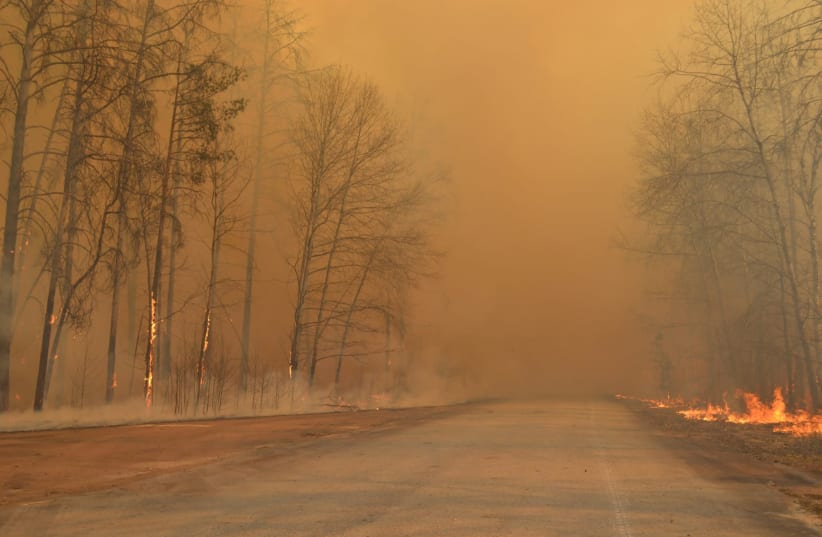While radiation levels in the area are considerably lower than right after the 1986 accident, it still poses risks, as radiation readings near the wildfires have been elevated. The wind is blowing towards rural areas of Russia and Belarus for most of the past week, but shifted toward Kyiv, Ukraine's capital, on Friday. Radiation levels are still normal in the city.
Kateryna Pavlova, the acting head of the agency that oversees the area, warned that strong winds on Saturday could spread the fires to the remnants of the nuclear plant and the equipment used to clean up the disaster, according to the Times.
"At the moment, we cannot say the fires is contained," said Pavlova.
Since the Chernobyl disaster in 1986, radiation has mostly harmlessly settled into the soil in the surrounding, fenced-off area known as the Zone of Alienation. The roots of moss, trees and other vegetation have absorbed some radiation, spreading radioactive particles in smoke when it burns.
Wildfires break out in the area often, but the fires currently blazing after a warm and dry winter are much larger than the usual blazes, according to the Times.
The fires have burned through over 8,600 acres in the past week, according to the Exclusion Zone Management Agency, which manages the site. About 400 firefighters, 100 fire engines and several helicopters were deployed to the area by Saturday.
Contaminated smoke is expected to reach Kyiv this week, but the radiation level in the air, once smoke has dispersed far from the fires, is considered safe, and is expected to be about a hundredth of the level deemed an emergency.
The Exclusion Zone Management Agency is working to protect critical infrastructure in the Chernobyl zone, including the plant itself and parking lots known as "graves" containing abandoned, highly contaminated trucks and tracked vehicles left from the original disaster, according to the Times.
The danger in the area is minimal as of today. The average radiation level in the zone is about a quarter as harmful to human health as it was right after the explosion.
The main risk is that the fires could spread particles through smoke, according to Olena Miskun, an air pollution expert with Ecodiya, an environmental advocacy group.
"Wind can raise hot particles in the air together with the ash and blow it toward populated areas," said Miskun to the Times. The particles could also land on gardens or fields and be consumed later.
“We are lucky to have quarantine measures in place now,” added Miskun. “People stay at home, walk less and wear masks,” anyway, because of the coronavirus outbreak.
In the early hours of April 26, 1986, a botched test at the nuclear plant in then-Soviet Ukraine triggered a meltdown that spewed deadly clouds of atomic material into the atmosphere, forcing tens of thousands of people from their homes.
Thirty-one plant workers and firemen died in the immediate aftermath of the accident, mostly from acute radiation sickness.
Over the past three decades, thousands more have succumbed to radiation-related illnesses such as cancer, although the total death toll and long-term health effects remain a subject of intense debate.
Reuters contributed to this report.
